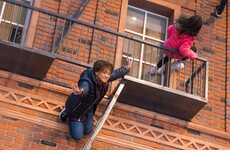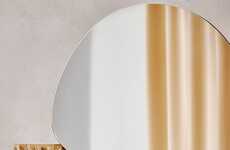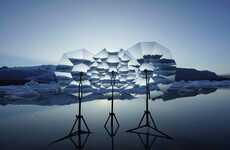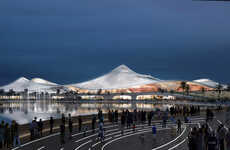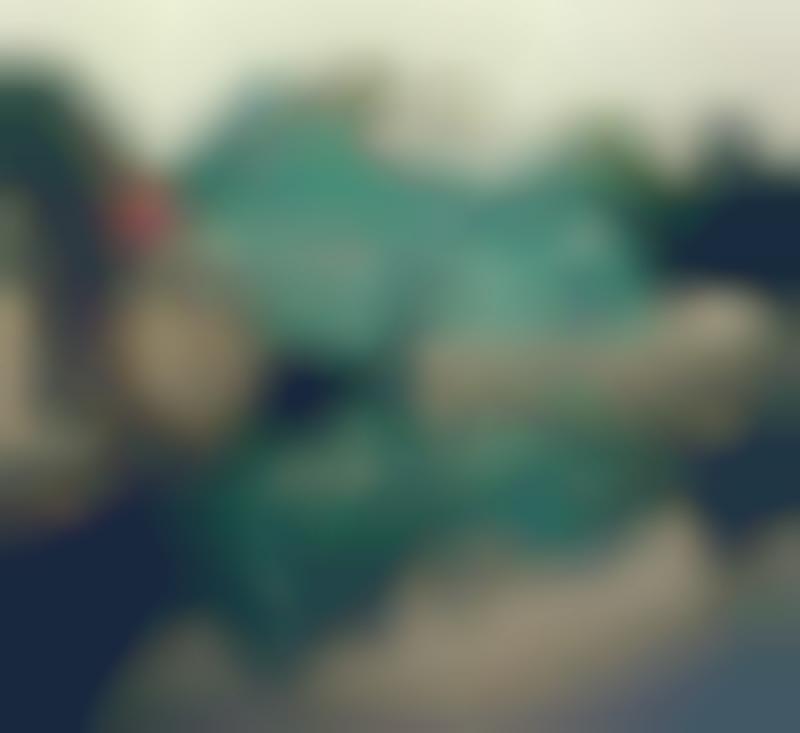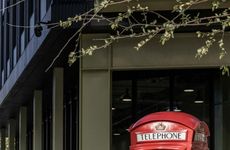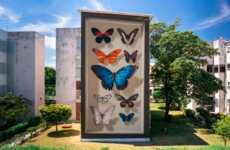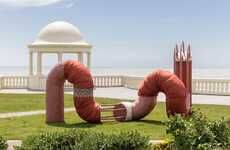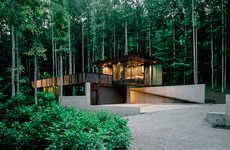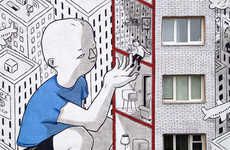
Ray Bartkus Painted this Mural Upside Down Using the Water as a Mirror
Ady Floyd — July 8, 2015 — Art & Design
References: suduvosgidas.lt & boredpanda
New York artist Ray Bartkus hand painted this beautiful upside down aquatic activity scene on a waterfront building. Ray Bartkus uses the water as a mirror to reflect his mural so that the reflection reveals the up-right image.
This unique wall mural presents an interesting art piece without the water. With the water, this artwork becomes a double-edged sword of artistic beauty. The scene shows a diver, boats, people kayaking and animals such as swans and leaping dolphins. The diver is particularly interesting because on the building all you can see is a pair of legs jutting out of the building's roof, but in the water, it looks as if someone was half submerged and photographed mid-dive.
This water-reflecting mural is located in Marijampolė , Lithuania. The simple and clever image reflects onto the Šešupė river that flows directly through the city.
This unique wall mural presents an interesting art piece without the water. With the water, this artwork becomes a double-edged sword of artistic beauty. The scene shows a diver, boats, people kayaking and animals such as swans and leaping dolphins. The diver is particularly interesting because on the building all you can see is a pair of legs jutting out of the building's roof, but in the water, it looks as if someone was half submerged and photographed mid-dive.
This water-reflecting mural is located in Marijampolė , Lithuania. The simple and clever image reflects onto the Šešupė river that flows directly through the city.
Trend Themes
1. Water-reflecting Murals as Artistic Landscape - Artists can leverage the use of water-reflecting murals to display creativity and provide a unique and innovative landscape for public and private spaces.
2. Water-reflecting Murals for Public Space Beautification - Water-reflecting murals can serve as a tool for public space beautification and improvement and, therefore, create a unique and beautiful environment for visitors.
3. Use of Water as a Natural Canvas for Murals - Artists can explore the innovative and disruptive approach to using water as a natural canvas for murals to provide unique improvised art with environmental and aesthetic benefits.
Industry Implications
1. Tourism - Water-reflecting murals can be used to provide attractive features for tourists, defining landmarks that are distinctive and ideal for sightseeing.
2. Public Art - Water-reflecting murals can be leveraged as a public art scheme by cities and municipalities as a means of beautification and overall visual improvements.
3. Real Estate and Architecture - Water-reflecting murals can be incorporated into real estate developments and building facades to provide distinctive and visually engaging features, resulting in a rise in demand for architectural and engineering solutions.
3
Score
Popularity
Activity
Freshness


